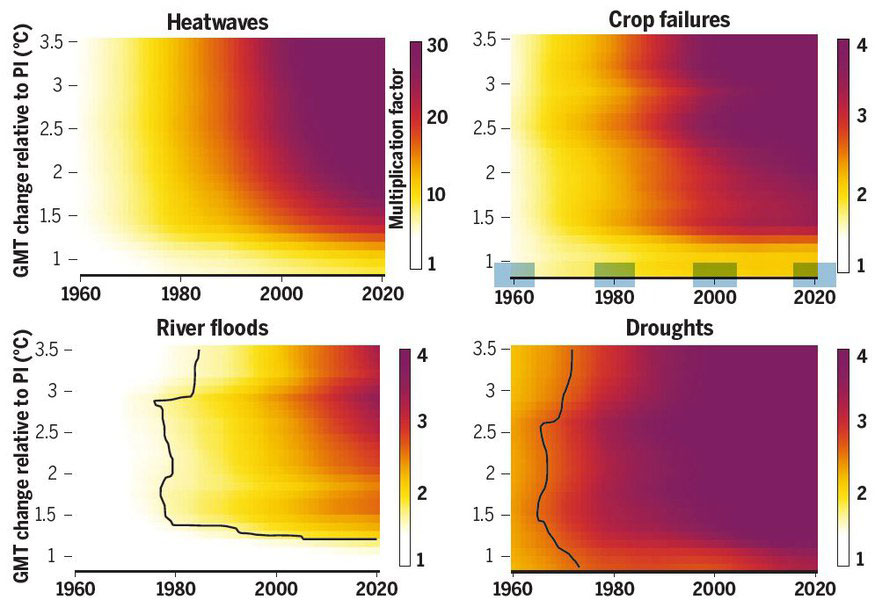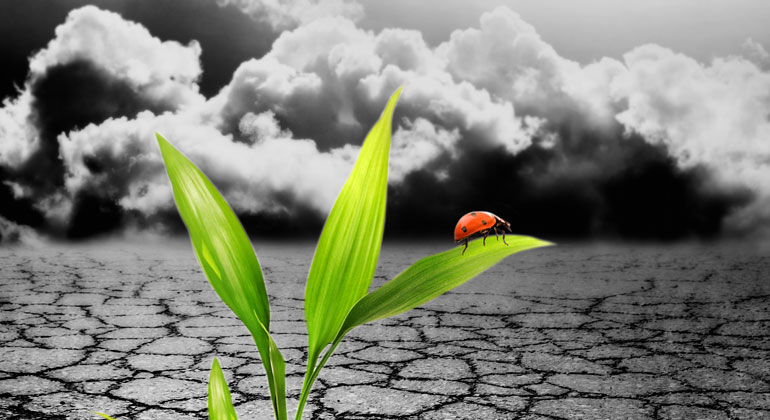Today’s children to experience two to seven times more extremes than their grandparents
Today’s children will be hit much harder by climate extremes than today’s adults, researchers show in the leading journal Science. During their lifetime, a child born in 2021 will experience on average twice as many wildfires, between two and three times more droughts, almost three times more river floods and crop failures, and seven times more heatwaves compared to a person who’s for instance 60 years old today, the researchers find based on data from the Inter-sectoral Impact Model Intercomparison Project (ISIMIP). This is under a scenario of current greenhouse gas emission reduction pledges by governments which will be a topic at the upcoming world climate summit COP26 in Glasgow.

“Our results highlight a severe threat to the safety of young generations and call for drastic emission reductions to safeguard their future,” says lead-author Wim Thiery from Vrije Universiteit Brussel. “We even have strong reasons to think that our calculations underestimate the actual increases that young people will face.” Regarding droughts, heatwaves, river floods and crop failures, people under the age of 40 today will live what the researchers call “an unprecedented life”.
“A huge opportunity”: Phasing out fossil fuels can limit risks
“The good news: we can indeed take much of the climate burden from our childrens’ shoulders if we limit warming to 1.5 degrees Celsius by phasing out fossil fuel use,” says Katja Frieler who is coordinating ISIMIP, she’s a leading scientist at the Potsdam Institute for Climate Impact Research and co-author of the study. “If we increase climate protection from current emission reduction pledges and get in line with a 1.5 degree target, we will reduce young people’s potential exposure to extreme events on average by 24% globally. For North America it’s minus 26%, for Europe and Central Asia minus 28%, and in the Middle East and North Africa even minus 39%. This is a huge opportunity.”
For instance, under a scenario of current insufficient climate policies dangerous heatwaves that affect 15% of global land area today could increase to 46%, hence triple by the end of the century. Yet limiting warming to 1.5 degrees, which is the ambition of the Paris Climate Agreement signed by almost all countries worldwide, would reduce the affected land area to 22%. This is more than today but significantly less than with unmitigated warming.
First analysis of this kind with focus on generations
The analysis is the first of its kind. To assess age-dependent extreme event exposure, the researchers took a collection of multi-model climate impact projections from the ISIMIP project building on the work of dozens of research groups worldwide. The researchers combined this with country-scale life-expectancy data, population data and temperature trajectories from the Intergovernmental Panel on Climate Change (IPCC).
- Artikel: „Intergenerational inequities in exposure to climate extremes“ | Science [DOI:10.1126/science.abi7339]








